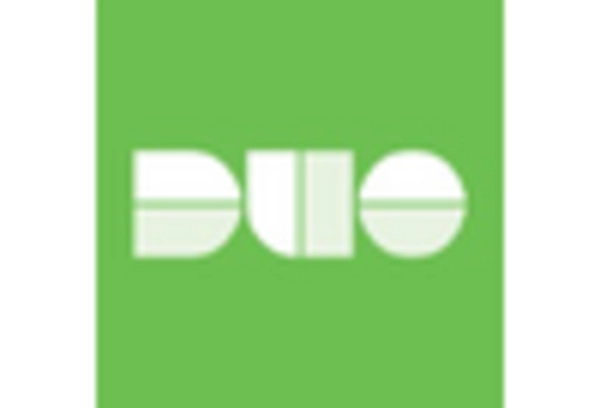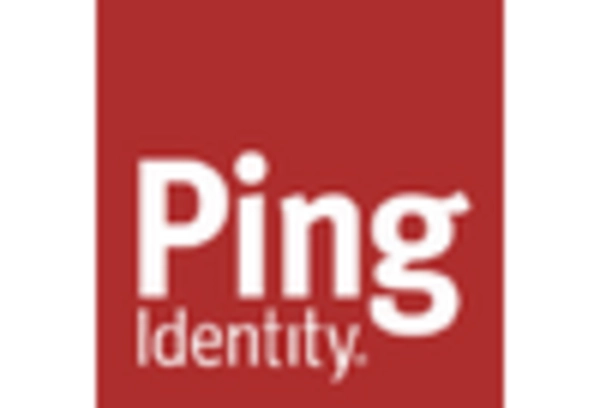The Authentication Service Market is currently characterized by a dynamic competitive landscape, driven by the increasing demand for secure digital identities and the proliferation of cyber threats. Key players such as Microsoft (US), IBM (US), and Okta (US) are strategically positioned to leverage their technological prowess and extensive resources. Microsoft (US) focuses on integrating its authentication services with its cloud offerings, enhancing user experience while ensuring robust security. IBM (US), on the other hand, emphasizes its AI-driven security solutions, aiming to provide adaptive authentication mechanisms that respond to evolving threats. Okta (US) continues to expand its identity management solutions, fostering partnerships that enhance its service offerings and market reach. Collectively, these strategies not only bolster their competitive positioning but also contribute to a rapidly evolving market landscape.
In terms of business tactics, companies are increasingly localizing their operations to better serve regional markets, optimizing supply chains to enhance efficiency and responsiveness. The Authentication Service Market appears moderately fragmented, with a mix of established players and emerging startups. This fragmentation allows for diverse offerings, yet the influence of key players remains substantial, as they set industry standards and drive innovation.
In August 2025, Microsoft (US) announced the launch of its new Azure Active Directory features, which integrate advanced machine learning capabilities to enhance user authentication processes. This strategic move is significant as it not only strengthens Microsoft’s position in the cloud services market but also addresses the growing need for intelligent security solutions that can adapt to user behavior and potential threats. By leveraging AI, Microsoft aims to provide a more seamless and secure user experience, which is increasingly critical in today’s digital landscape.
In September 2025, IBM (US) unveiled its latest AI-driven identity and access management platform, designed to streamline authentication processes across various applications. This initiative reflects IBM’s commitment to innovation and its understanding of the necessity for organizations to manage identities securely and efficiently. The introduction of this platform is likely to enhance IBM’s competitive edge, as it aligns with the market’s shift towards integrated security solutions that utilize advanced technologies.
In July 2025, Okta (US) expanded its partnership with leading cloud service providers to enhance its identity management capabilities. This strategic alliance is pivotal as it allows Okta to offer more comprehensive solutions that cater to the diverse needs of enterprises. By collaborating with other technology leaders, Okta not only broadens its service portfolio but also strengthens its market presence, positioning itself as a key player in the authentication landscape.
As of October 2025, the competitive trends in the Authentication Service Market are increasingly defined by digitalization, sustainability, and the integration of artificial intelligence. Strategic alliances among key players are shaping the current landscape, fostering innovation and enhancing service offerings. Looking ahead, it is anticipated that competitive differentiation will evolve, with a pronounced shift from price-based competition to a focus on innovation, technological advancement, and supply chain reliability. This evolution underscores the necessity for companies to adapt and innovate continuously to maintain their competitive edge in a rapidly changing market.

















Leave a Comment